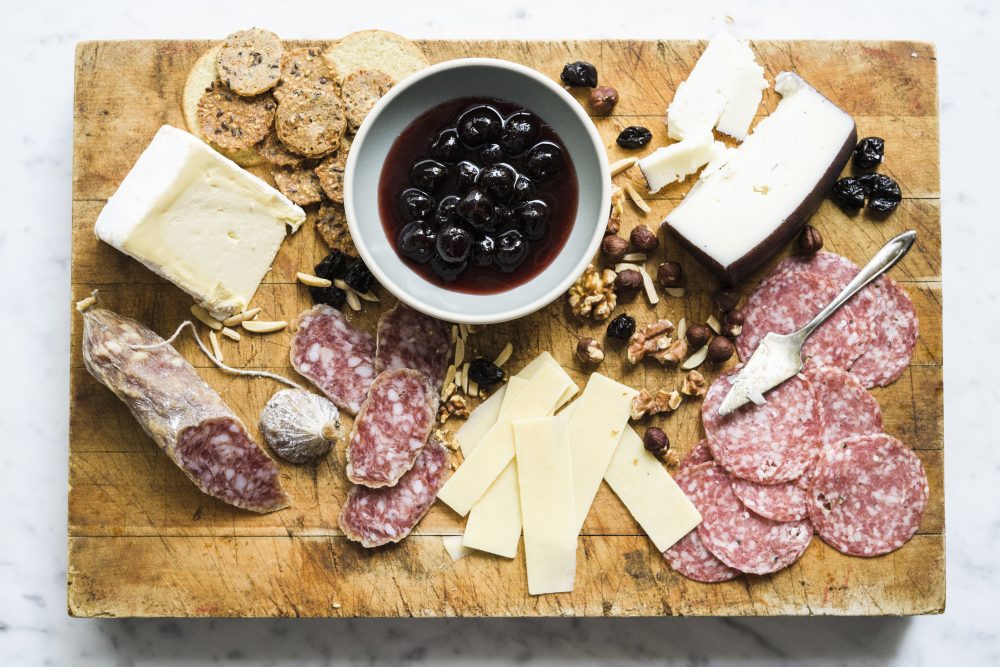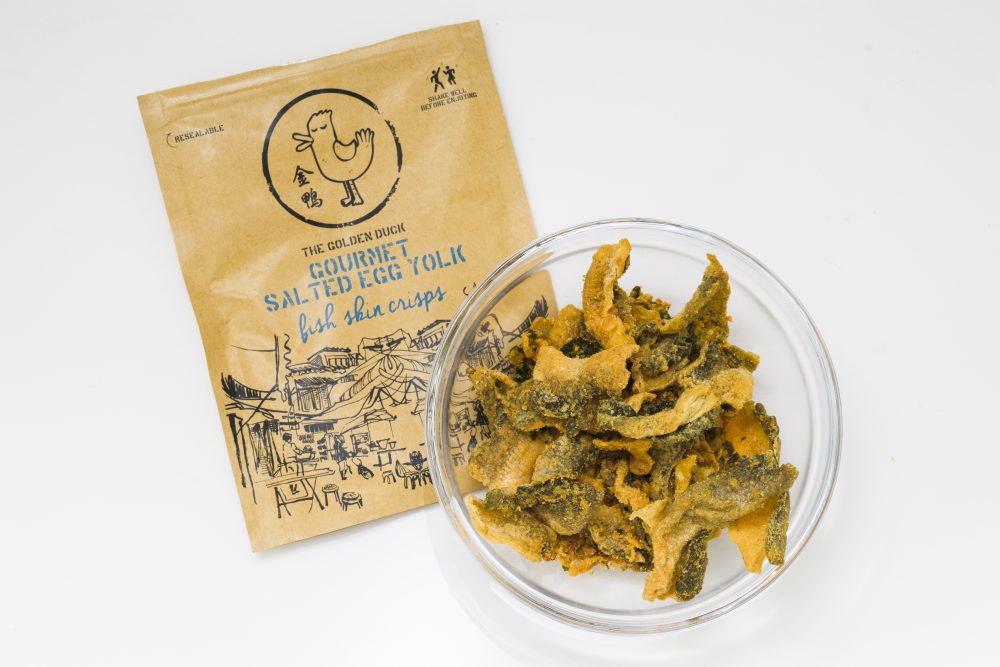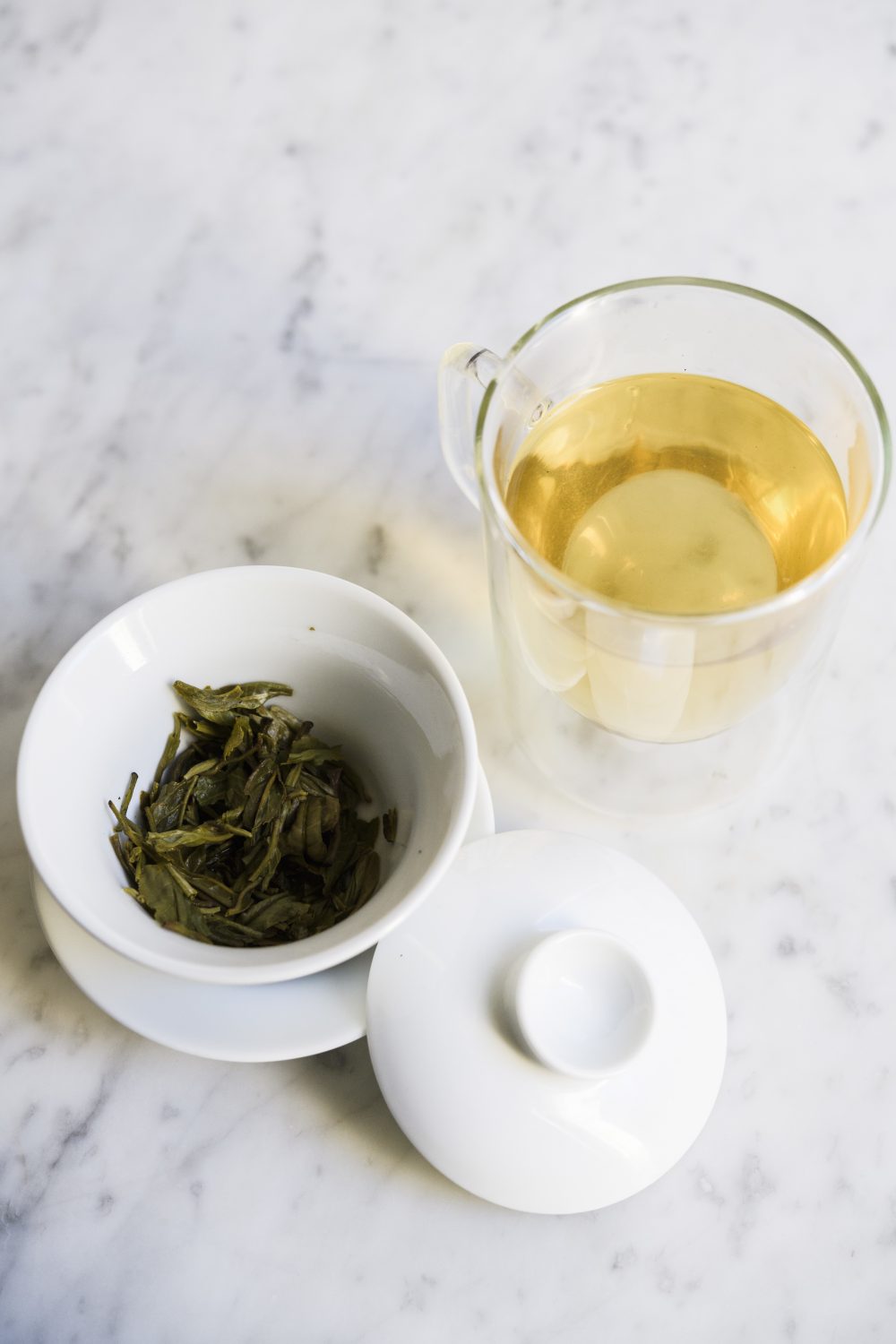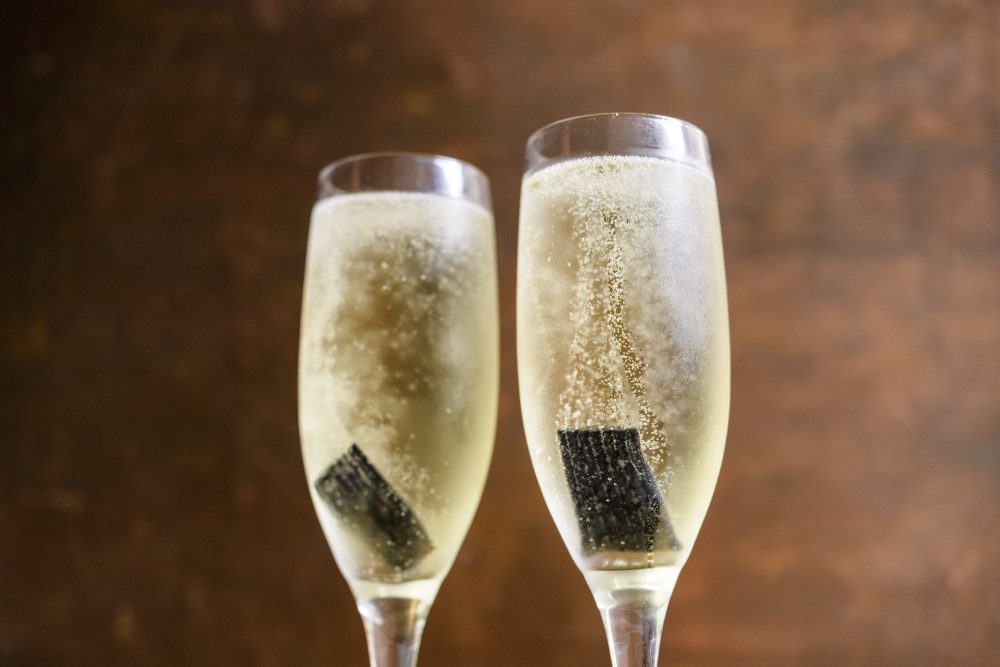
Sweet Heat
We love the sharp heat of wasabi on peas, almonds and—of course—sushi. But we'd never considered cherries. At Smoke & Mirrors, a cocktail bar perched on the roof of Singapore's National Gallery, head bartender Yugnes Susela mixes wasabi paste into amarena cherries, then uses them to add a sweet-heat kick to a signature martini. We also liked them with an old fashioned or accompanying cheeses and charcuterie. To make, mix 1¼ teaspoons wasabi paste into ½ cup amareno cherries and their syrup.
Salty. Crunchy. Fishy?
The potato chip has delicious competition in Singapore, where the go-to salty-crunchy snack is fish skin coated with salted egg yolk, then fried crisp. The crisps may sound odd, but the salted yolks—a Chinese ingredient made by dry curing yolks in salt—give the crisps a deeply savory flavor that's richer, yet somehow lighter than potato chips. The taste is savory, but never fishy. Our favorite brand was The Golden Duck, which seasons its skins with curry leaves and chilies. Available online at TheGoldenDuck.co.


The Sour Side of Airport Snacks
Passing through Tokyo recently, we were drawn to the tremendous array of airport snacks based on salty-sour umeboshi plums. The tiny, tart fruits typically are pickled in vinegar and salt, then served—whole or as a paste—with white rice. But at Narita International Airport, we found them transformed into honey-soaked pickles, hard candies, kid-friendly fruit leathers and—our favorite—triangular onigiri, an on-the-go treat of tender, sweet white rice stuffed with umeboshi paste and wrapped in nori seaweed. A wide variety of umeboshi candies and chews are available on Amazon.
An Ancient Tool for Loose-Leaf Tea
During the Ming dynasty—centuries before the invention of tea balls, steeping mugs, filter baskets and infuser spoons—China crafted the gaiwan, a vessel for loose-leaf tea that acts as both a teapot and a teacup. Its three parts—cup, lid and saucer—fit neatly together and can be held in one hand. Using a gaiwan is simple. Place a small amount of tea leaves in the cup, pour hot water over them, cover, then allow the tea to steep. To strain, hold the flared cup between your thumb and middle finger, clamping down the lid with your forefinger, and either pour the tea into another cup or sip straight from the gaiwan. Gaiwans are made in porcelain, clay, celadon and glass; porcelain versions won't stain and are easy to clean. ArtofTea.com sells a 4-ounce white porcelain gaiwan for $12.50.


Of Bubbles and Black Licorice
Discovering new flavor combinations is part of the joy of travel. But we weren't so sure the black licorice and Champagne served as a starter a ROK—an industrial chic Reykjavik restaurant with a live grass roof—was going to qualify. Until we tasted it. The bits of tender, only lightly sweet anise—a ubiquitous candy in Iceland—lingered in our mouths as we sipped the dry sparking wine, and we were surprised by how wonderfully they complemented one another, together tasting reminiscent of a floral ginger bread. We were even more surprised when we dropped a piece of licorice directly into our glass—and loved it.
Q: “Many of your recipes called for specific varieties of paprika—sweet, smoked or hot. But at the supermarket, I often can only find smoked or unspecified “paprika.” How should I handle this?” — Pat Henderson, Jacksonville, Florida
We agree—those unmarked tins and bottles can be confusing, making it hard to know what you're getting. So let's start with the basics. All paprika is made from dried red peppers. Whether it packs heat or sweet depends on the variety of pepper used and whether the seeds were removed. Though often associated with Hungary and Spain, paprika originated in Latin America. Hungarian paprika tends to be the most flavorful; it usually is identified as sweet or hot on the package. Use it when you want a bold hit of flavor. Spanish paprika—pimentón de la Vera, or smoked paprika—packs a deep smoky flavor and can vary from mild to hot. (It should be labeled. If not, assume it's mild.) Smoked paprika is a common flavoring in paella and chorizo. Most supermarket brands identified solely as “paprika” are mild, sweet and overall less robust. It's likely a blend from Hungary, Spain and/or the U.S. If that’s all you have but need hot paprika, use it and add a pinch of cayenne.



